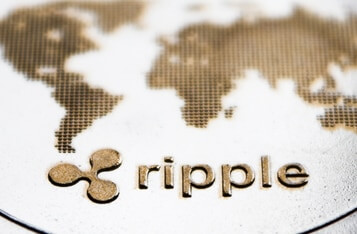Evolution of the global payment industry
The global payments industry is experiencing rapid change due to changing consumer preferences, regulatory changes, and technological advancements. According to Ripple, modern payment solutions, including blockchain-based payments, are playing a pivotal role in achieving faster, more comprehensive, and transparent customer experiences.
To navigate this dynamic environment ripple (XRP) has published its 2023 Regional Payment Trends eBook. This comprehensive report examines key insights by region, including North America, Asia, Africa, Latin America, and Europe, providing valuable guidance to businesses and institutions looking to leverage innovative cross-border payment solutions.
North American Open Banking
The financial landscape in North America is undergoing significant change. Technologies that enable secure data exchange, interoperability, and faster payments are contributing to a more streamlined and efficient financial ecosystem. Open banking adoption is surging due to rising consumer demand, with 71% of U.S. consumers preferring to make purchases or pay bills directly from their bank account.
Despite this, only 34% of U.S. consumers using open banking technology are aware of it. Regulatory frameworks and training initiatives are lagging, hindering widespread adoption. The launch of FedNow, the U.S. Federal Reserve’s instant payment service, and the ISO 20022 messaging standard are expected to further expand the rollout of instant payment services and improve payment communication and processing accuracy.
Instant payments in Asia Pacific
Asia Pacific is at the forefront of digital finance, home to 10 of the 13 most profitable digital-only banks globally. The region’s innovative technologies, widespread smartphone accessibility, favorable regulatory framework, and customer-centric culture have made it a leader in financial innovation. QR code-based real-time payment systems in Singapore and Thailand, and India’s Unified Payments Interface, which recently surpassed 10 billion transactions, demonstrate the region’s appetite for experimentation and adoption.
However, challenges such as privacy and security concerns, macroeconomic volatility, and unpredictable consumer behavior may hinder the adoption of new payment methods. Collaboration between national governments and private industry to deploy solutions that address these challenges is critical to continued success.
Mobile payments in Africa
In Africa, the convergence of digital payments and mobile-first innovation is revolutionizing financial inclusion. Cost barriers, lack of identification documents, limited access to a wide range of financial services due to few physical bank branches and a cash-heavy economy are driving the adoption of digital payments. The region accounts for 70% of the $1 trillion in global mobile money value and nearly half of registered mobile money accounts.
Cryptocurrency-based remittance payments are gaining momentum, with inbound remittance payments in Africa exceeding $100 billion last year. Despite challenges such as interoperability issues and security issues, cryptocurrency payments are poised to improve accessibility and affordability across the region.
Cryptocurrency in Latin America
Latin America is undergoing a digital transformation, driven by fintech investments and progressive governments. The move away from cash, inflation concerns and problems with banking systems have led consumers to opt for digital payments and crypto-based solutions. Cashless transactions are expected to increase by 52% by 2025 and by 48% by 2030.
High fees and low interoperability remain challenges in the region. However, regulators are working to overcome these challenges and meet demand through real-time payment options. Digital banks are also playing a role in promoting digital payments through improved availability and education. Central bank digital currencies (CBDCs) are becoming a tool to improve inclusion and manage macroeconomic uncertainty.
Instant payments in Europe
Interest in instant payments is growing in Europe, driven by consumer and business expectations. Initiatives such as the European Central Bank’s exploration of a digital euro and the UK’s Fast Payments System represent progress towards a more resilient and innovative financial environment. The European Commission’s new proposals aim to promote innovation and competition in the financial sector by reducing fraud, improving open banking capabilities and harmonizing administrative rules.
Despite progress, challenges remain. One in three EU payment service providers does not offer instant payments in euros, and up to 70 million payment accounts in the euro area do not support instant payments. Conflicts of interest and lack of critical mass participation continue to deteriorate the European financial environment. However, the region’s technology leadership and digital-first approach gives it a strong competitive advantage.
The future of payments
The common theme of innovation and advancement across the global payments landscape signals a new era of streamlined payments experiences characterized by speed, comprehensiveness, and transparency. Ecosystem participants must embrace innovation, adapt to change, and pioneer solutions that meet the evolving needs of businesses and individuals.
To learn more about global payment trends, download Ripple’s Regional Payment Trends 2023 eBook.
Image source: Shutterstock
. . .
tag

